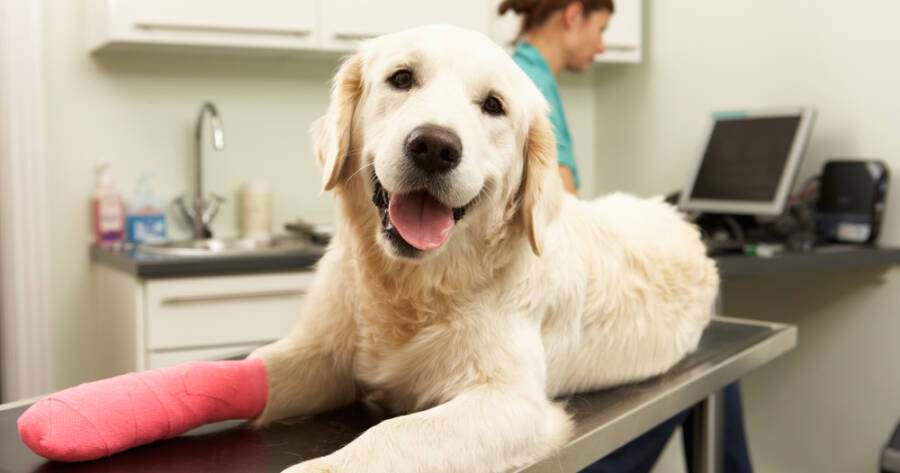Accidents and emergencies can occur at any time, and being prepared can make all the difference in handling unexpected situations involving your pet. Having basic first aid knowledge may empower pet owners to take necessary precautions before reaching professional medical assistance. Take the time to learn the essential first aid tips that every pet owner should consider, like potential injuries, basic treatments, and preventative measures. While these guidelines can be helpful, it’s always crucial to consult a veterinarian for comprehensive care.
Preparing a Pet First Aid Kit
A well-stocked first aid kit can be an invaluable resource in an emergency, potentially allowing you to provide immediate care while waiting for veterinary attention.
Kit Essentials
Your first aid kit should ideally include basic supplies such as bandages, antiseptic wipes, adhesive tape, and sterile gauze pads. A digital thermometer to check your pet’s temperature, tweezers for removing splinters or ticks, and a muzzle (since injured animals might bite) are also beneficial. You might also want to include a pet-specific first aid book or guide that offers quick instructions on handling various emergencies.
Medication Supplies
Including certain medications, as advised by a veterinarian, can be practical. This might include antihistamines for allergic reactions or activated charcoal for suspected poisoning, although these should only be used under guidance. Always ensure that all medications are pet-safe and clearly labeled with instructions for use.
Handling Minor Injuries
Understanding how to handle minor injuries could prevent them from developing into more serious conditions.
Cuts and Scrapes
Minor cuts and scrapes are often inevitable. Cleaning the area gently with antiseptic wipes might reduce the risk of infection. Applying a non-toxic wound ointment may accelerate healing, but observation for any signs of infection, such as redness or swelling, is crucial. If the wound doesn’t improve or worsens, consulting a veterinarian could be necessary.
Sprains and Strains
Pets, especially active ones, might occasionally sprain or strain their muscles. Rest, ice packs, and careful monitoring are often recommended approaches. Limiting your pet’s activity and providing a soft bed might aid a quicker recovery. If limping or discomfort persists, veterinary advice should be sought.
Responding to More Serious Incidents
For more serious emergencies, immediate care can stabilize the situation until professional help is available.
Choking and Breathing Difficulties
If your pet is choking, it’s essential to act swiftly but cautiously. Inspect their mouth, but be careful not to push the object further down. The Heimlich maneuver, appropriately modified for pets, may help dislodge obstructions. Difficulty breathing can be critical; removing any tight collars and keeping the pet calm is crucial while seeking veterinary assistance.
Poisoning
If you suspect your pet has ingested a toxic substance, contacting a veterinarian promptly is vital. Having the contact details for a local poison control center handy can also be advantageous. Inducing vomiting is typically not recommended unless specifically directed by a professional, as it could cause additional harm.
Dealing with Heatstroke and Hypothermia
Extreme temperatures can impact pets severely, making it necessary to recognize symptoms of heatstroke or hypothermia and know how to respond.
Heatstroke
Heatstroke can happen quickly in pets exposed to high temperatures. Symptoms might include excessive panting, lethargy, and collapse. Moving the pet to a cooler area, offering small amounts of water, and dampening their fur can help lower body temperature. Immediate veterinary consultation is advised, as untreated heatstroke can pose serious health risks.
Hypothermia
In cold climates, hypothermia can be a concern. Symptoms may include shivering, weakness, and slowed breathing. Wrapping your pet in warm blankets and relocating them to a warm environment could help raise their body temperature. Avoid using direct heat sources like heating pads, as they may cause burns. Seek prompt veterinary care to ensure thorough assessment and treatment.
Preventative Measures and Pet Safety
Preventative strategies can often mitigate the risk of accidents and health emergencies, contributing significantly to pet safety.
Securing Harmful Substances
Keeping potential toxins, including certain foods, chemicals, and plants, out of reach is a proactive safety measure. Understanding what substances are harmful to your pet and ensuring they are stored securely can prevent accidental ingestion.
Supervision and Safe Environments
Close supervision during outdoor activities can prevent many accidents. Ensuring that your pet’s environment is safe and devoid of hazards, such as sharp objects or open water bodies, could reduce injury risk. Investing time in regular training can also ensure that your pet follows safe behaviors in different settings.
Learn More Today!
While emergencies can be unsettling, having fundamental first aid knowledge and preparedness can often make a meaningful difference in your pet’s recovery and well-being. These tips provide a foundation for addressing common injuries and conditions, but the importance of professional veterinary care cannot be overstressed.
Regular consultations with your veterinarian for health check-ups, vaccinations, and tailored advice remain key components of responsible pet ownership. By staying informed and proactive, pet owners can create a safer and healthier environment for their beloved furry friends, navigating emergencies with greater confidence and ease.

